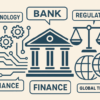Cornerstone of Contribution: Establishing a Robust and Effective Onboarding Journey
Creating a thoughtful and structured onboarding workflow is essential for creating the conditions necessary for employee success. Onboarding goes beyond merely orienting new hires, as it involves a comprehensive strategy encompassing employee engagement, culture assimilation, and skill development from day one. In today’s fast-paced business environment, companies recognize the significant role a well-executed onboarding process plays in enhancing retention and boosting workforce productivity, proving that getting it right from the start can yield substantial long-term benefits.

Studies consistently show that organizations with a robust onboarding framework report higher employee satisfaction, loyalty, and motivation rates. This is an imperative development as today’s workforce is more diverse and demanding regarding their need for meaningful engagement from their employers. Businesses that adapt their onboarding strategies to meet these expectations find themselves at a competitive advantage. Let’s dive into the critical components and strategic insights defining an onboarding workflow journey, offering immediate and future benefits.
Introduction to Onboarding: Building Blocks for Success
A well-planned onboarding process is the backbone of an employee’s journey within a company, providing a warm welcome and a detailed framework for future growth. It begins with a planned induction that gives new personnel the necessary skills and helps them fit into the business culture. Proper onboarding empowers employees to realize their potential and aligns with the company’s vision. Data suggests effective onboarding can reduce turnover, alleviate adjustment stress, and propel recruits toward peak performance faster. Without question, laying a strong foundation through organized onboarding is the first step toward cultivating a dedicated and dynamic workforce.
Key Components of a Robust Onboarding Process
Essential elements of a successful onboarding process continue to evolve but typically include comprehensive orientation sessions, mentorship programs, and structured training. Orientation serves to welcome and introduce new hires to the organizational environment, culture, and values. Mentorship is equally critical, providing a framework for relationship-building and professional development. This experience is enhanced through structured training sessions that keep employee skills relevant and beneficial for mutual growth. Importantly, the effectiveness of these components depends on good communication and reasonable expectations to guarantee that new workers can do their jobs well and support company objectives.
The Role of Technology in Modern Onboarding
Technology is revolutionizing onboarding by providing innovative solutions that enhance the efficiency and experience of new hire programs. Many organizations now use digital platforms offering virtual orientations and interactive e-learning modules. These tools provide instant access to resources, foster self-paced learning, and embrace a dynamic approach to employee education. Insights from recent analyses reveal that companies that have integrated digital solutions into their onboarding processes witness improved employee engagement and knowledge retention. Technology doesn’t just enhance the onboarding experience; it personalizes it, shaping a seamless transition into the workforce.

Personalized Onboarding: Designing Tailored Experiences
Today’s diverse work environments necessitate a personalized approach to onboarding, ensuring each employee’s unique needs and career aspirations are acknowledged. Personalizing onboarding experiences addresses individual learning styles and preferences, increasing engagement and satisfaction.
Measuring Success: Evaluating Onboarding Effectiveness
Determining the success of an onboarding program requires setting well-defined goals and metrics, such as employee satisfaction scores, retention rates, and time-to-productivity ratios. These metrics offer valuable insights into onboarding effectiveness and inform continuous improvement efforts. By systematically measuring success, companies can refine their onboarding processes and align them with business goals and employee expectations.
Challenges and Solutions in Onboarding
Despite the best intentions, onboarding processes can encounter hurdles such as information overload or mismatched cultural fits. These challenges necessitate adaptive and creative solutions. Streamlining information delivery through concise and interactive methods can mitigate cognitive overload, while cultural onboarding helps guarantee that new workers fit in with the corporate culture. Tailoring onboarding experiences to cater to diverse learning styles and gathering regular feedback to resolve cultural issues can greatly enhance the integration of new employees into the company fabric.
FOLLOW US ON FACEBOOK
RECENT POSTS
TAGS
About The Memory Hole
You've reached TheMemoryHole.org! A diverse lifestyle blog with content on a variety of different topics to help you define and live the life you want to live! Thanks for stopping by!
Copyright © The Memory Hole. All rights reserved.








